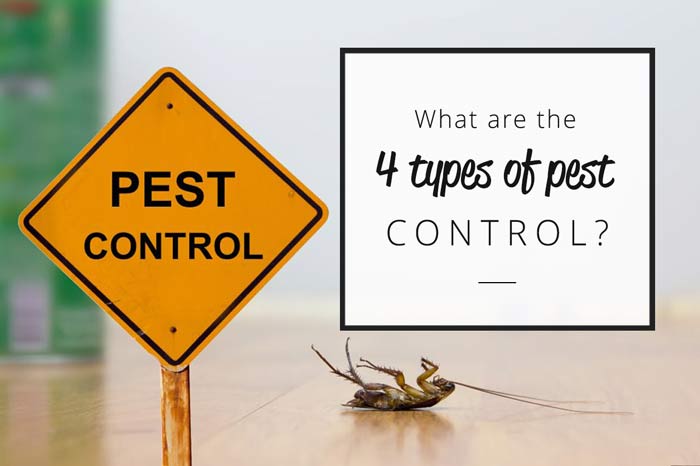The Facts About Pest Control Uncovered
The Facts About Pest Control Uncovered
Blog Article
Little Known Facts About Pest Control.
Table of ContentsThe Only Guide for Pest ControlA Biased View of Pest ControlSome Of Pest ControlExcitement About Pest ControlOur Pest Control Statements
Take a look at plants very carefully (tops of fallen leaves, bases of leaves, stems, and soil) before planting to ensure they are clean. Take into consideration growing identified as resistant to insects. Immune cultivars are those that repel, are unattractive to, or otherwise disagree as food for certain insects or that stand up to feeding by specific bugs with little decrease in return or top quality.If deer are an issue in a yard, select a plant that is naturally resistant to deer predation over a plant that is much more attractive to deer. Planting 2 comparable plants in successive years has a tendency to boost pest troubles.
Some bugs hibernate in the soil or clutter around plants or lay eggs in or on the host plant. Do not expand the exact same kind of veggie in the very same location each year (Number 84). Use related crops in a site just when every three or 4 years. The rotation duration for staying clear of some tomato diseases might be five to 7 years.
Plant rotation is most reliable on insects that develop on a couple of plants. Prevent placing all plants of one kind with each other; instead spread them throughout the garden (Number 85). Think about alternating groups of various plants within rows or patches. Pests that become extreme on cabbage probably additionally infest nearby mustard, broccoli, and collards, yet they might not infect cabbage grown on the other side of the garden.
Unknown Facts About Pest Control

Weeds and yards can nurture both insects and advantageous insects. Crawler mite issues are fewer, for example, if broadleaf weeds near fruit trees are eliminated. If the weeds are very closely associated to the crop plants, they can harbor insect insects and must be eliminated. Bugs with a wide host rangesuch as armyworms, crickets, cutworms, flea beetles, insects, lygus insects, slugs, snails, have an odor pests, and thripsoften populate scraggy locations and can transfer to nearby desirable plants.
It is pop over to this web-site important to trim weeds prior to a plant is established to prevent insects from moving to the desirable plants. Weeds that bring in pests can be a feeding ground for birds.
A Biased View of Pest Control
The blossoms of thistle, plantain, knotweed, and dandelion are very important to honey bee populaces. Getting rid of weeds after flowering but before seed collection supplies food for the honey bees yet maintains the weeds from continuing to spread. An additional way to take care of insect pests is to plant a crop that is very eye-catching to pests and afterwards deal with the trap crop with pesticide.
Crop turning is a valuable cultural approach for minimizing bug and illness problems, yet many garden enthusiasts do not have the area to why not look here sufficiently apply this technique. Where space is limited, it might be best to enable the garden to lay fallow for a year or 2 or more. Consider elevated beds with new dirt or plant in containers when you understand a disease issue exists.
Number 82. Leave a few inches of space around the trunk of the plant when mulching. Look At This hardworkinghippy: La Ferme de Sourrou Figure 83. Constantly inspect the bottoms of leaves at the nursery. Keep in mind the high density of whiteflies under this tomato fallen leave. Scot Nelson Flickr Figure 84. Crop rotation is necessary.

Excitement About Pest Control
Nearly any large non-venomous pest can be chosen off at any type of phase. To prevent the job of hand-squashing the insects, knock the insects and egg collections right into a coffee can or quart container with a percentage of water and a little bit of meal detergent. Insect catches can aid with discovery and monitoring.
Also, these traps do not catch some wingless varieties, along with those species energetic only throughout the day (diurnal) rather than active during the evening (nighttime). Scent traps are used for finding the existence of parasites or sometimes for disrupting insect mating behaviors. Adult women create and release a chemical odor appealing to men of the exact same species.
Rainfall, amazing temperature levels, wind speed, and wind direction can decrease the appeals' efficiency. Warm, sunlight, or inappropriate storage space can harm fragrant lures. The finest success takes place when the parasite thickness is reduced and activity right into the area is very little. Some physical traps are easy to make from materials around the home.
Some Known Details About Pest Control
Mix 1 quart of clay with 2 gallons of water and 1 tbsp of fluid soap in a sprayer. This barrier is preventative; it will certainly not work if an insect bug is already established.
Report this page